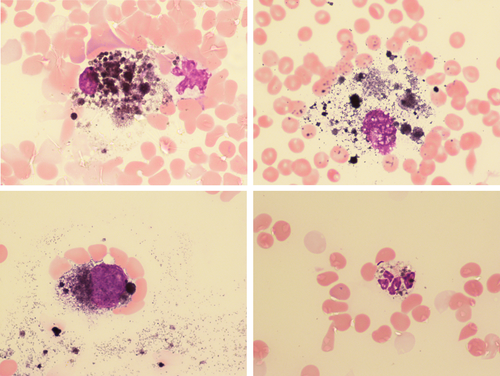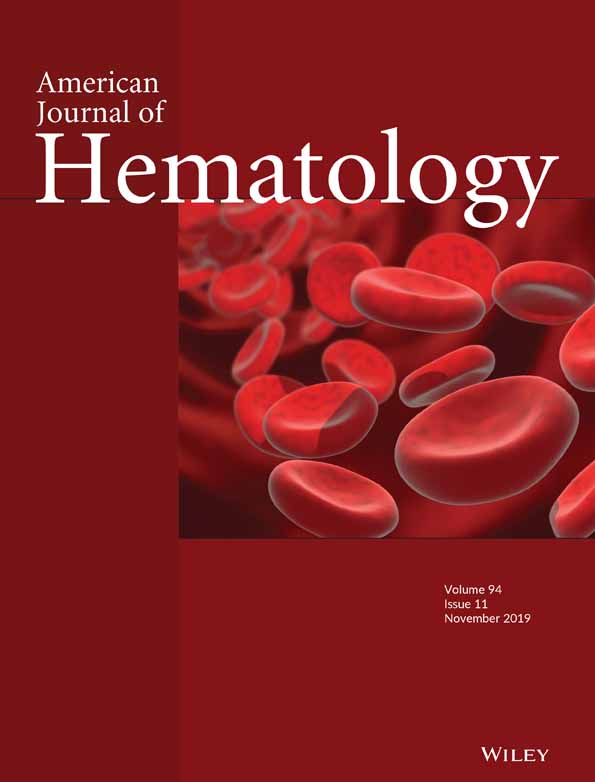It's a black day—metastatic melanoma in the bone marrow
A bone marrow aspirate showed abundant macrophages containing melanin (Images, top). In addition there were melanoma cells (Image, bottom left), which were sometimes difficult to distinguish from macrophages. Neutrophils in the bone marrow contained melanin (Image, bottom right). The patient's trephine biopsy specimen was black on macroscopic examination. A buffy coat preparation from the peripheral blood of this patient has previously been reported; both circulating melanoma cells and neutrophils containing melanin were detected.2
A diagnosis of metastatic melanoma can be confirmed by immunohistochemistry but in this case the clinical and morphological features were sufficient for an unequivocal diagnosis.
CONFLICT OF INTEREST
Nothing to report.





